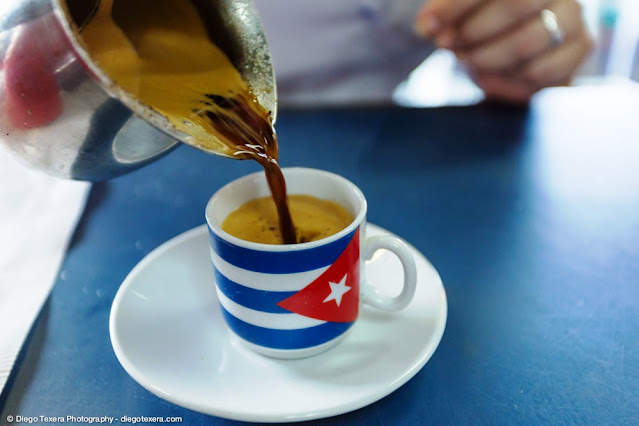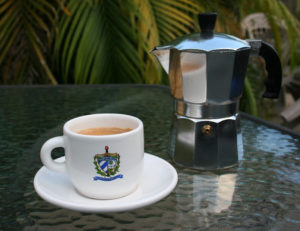LA MÚSICA CUBANA: INCOMPARABLES BENY MORÉ Y SU BANDA GIGANTE Y LA ORQUESTA ARAGÓN. PHOTOS
Beny Moré fue un caso único, con precedentes en cantantes anteriores, pero nadie ha llegado a superarlo ni a relevarlo. Aún hoy generaciones de jóvenes que no lo escucharon personalmente, lo consideran el músico más popular de aquel momento y fue en definitiva, quién cubanizó definitivamente la orquesta jazzband hasta castellanizar su nombre. Pero no olvidemos el papel en ello de “Castellanos que bueno baila usted”, estelar trombonista y arreglista de la orquesta fallecido en Miami.
Las orquestas charangas, fueron también muy sensibles a las transformaciones ocurridas a través de estas décadas y en las que sobre todo en el piano y la flauta tuvieron papel principal, muestra son la excelencia del pianismo en Antonio María Romeu y Neno González; y de la flauta en Belisario López que fueron pioneros de lo que vendría después.
VIDEOS- BENY MORE Y SU BANDA GIGANTE…-
La Orquesta de Antonio Arcaño, integrada por los virtuosos: Arcaño en la flauta, Jesús López en el piano, Israel López (Concertista de la Orquesta Filarmónica Nacional) en el Contrabajo, su hermano Orestes en el cello, ambos arreglistas y compositores de muchísimos danzones, los violinistas Miguel Valdés y Elizardo Aroche y Ulpiano Estrada en el timbal o paila. Estos músicos de muy alta calidad integraron la nombrada Arcaño y sus Maravillas.
ORQUESTA ARAGON
En 1955 La Aragón, se instaló definitivamente en La Habana, contratada por la Cerveza Cristal, con objeto de grabar un programa diario en Radio Progreso. Si en un principio su repertorio estaba compuesto por danzones, boleros, guarachas y otros géneros de la música cubana, con el triunfo del chachachá, La Aragón se convirtió en la principal intérprete de este género, al que llevó a su más refinado nivel creativo e instrumental.
La Orquesta Aragón, no solo fue popular por interpretar el son y el cha cha cha, sino que también fue inspiradora del mambo. Se formó en Cienfuegos en el año 1939 y fue fundada por Orestes Aragón de profesión carpintero. Esta agrupación destacaba sus tres violines, la flauta y el cello; describiendo la música de cuerda que se tocaba originalmente en los bailes y fiestas de salones de la blanca burguesía en los años 40 y 50.
En algo más de 70 años La Orquesta Aragón ha interpretado miles de éxitos como El Bodeguero, El cerquillo, Cachita, Pare Cochero, Guajira con tumbao, Tres lindas cubanas, los que no pasan de moda. La Orquesta Aragón junto con Benny Moré son el fenómeno musical más importante en Cuba en el siglo XX a mi juicio y gusto.
Junto a un fuerte movimiento cancionístico, música elaborada para cubrir las necesidades de la radio en un ambiente que resultaba similar al de otras ciudades latinoamericanas, la visita de artistas latinoamericanos principalmente de Puerto Rico, de México, Colombia y Venezuela, la difusión por la radio de canciones de Agustín Lara y María Grever, Pedro Flores, Consuelo Velázquez, Rafael Hernández, Bobby Capó, se sumaba el auge de cantantes cubanos de similares condiciones, y de autores que seguían la misma línea cancionística: Osvaldo Farrés, Pedro Junco, Bobby Collazo, Adolfo Guzmán, que interpretaban Olga Guillot, Mario Fernández Porta, Fernando Albuerne, Blanca Rosa Gil, Orlando Vallejo, y Esther Borja, que fue intérprete de Lecuona y de los autores del Teatro Lírico Cubano.
Fue la época de los iniciadores, los pioneros del “feeling”; César Portillo de la Luz, Ñico Rojas, Luis Yáñez, José Antonio Méndez, el pianista era Frank Emilio Flynn que sentaría cátedra con sus descargas y su grupo Los Amigos del cual tenía un disco que, maravilla de la tecnología, no se rayó ni gastó a pesar de que lo ponía repetidamente hasta el cansancio.
El fílin (feeling=sentimiento en inglés), que había asimilado elementos de la canción norteamericana, en ese proceso de transculturación, no desechó los valores que le dieron identidad cubana, consolidó sus elementos y, aunque tenía evidente influencia del tipo de canción del inmenso Frank Sinatra, en todo su devenir se le ha considerado una nueva expresión de nuestra canción yo diría que de las mejores.
CUBAN MUSIC: THE INCOMPARABLES BENY MORE AND HIS BANDA GIGANTE Y LA ARAGÓN. PHOTOS
Beny Moré was a unique case, with precedents in previous singers, but no one has managed to surpass him or relieve him. Even today, generations of young people who did not listen to him personally, consider him the most popular musician of that time and he was ultimately the one who definitively Cubanized the jazzband orchestra until his name was Spanishized. But let’s not forget the role in this of “Castellanos que bien baila tú”, a stellar trombonist and arranger of the orchestra who died in Miami.
The charanga orchestras were also very sensitive to the transformations that occurred throughout these decades and in which, above all, the piano and flute played a leading role, exemplified by the excellence of the pianism of Antonio María Romeu and Neno González; and the flute in Belisario López who were pioneers of what would come later.
The Antonio Arcaño Orchestra, made up of virtuosos: Arcaño on the flute, Jesús López on the piano, Israel López (Concertist of the National Philharmonic Orchestra) on the Double Bass, his brother Orestes on the cello, both arrangers and composers of many danzones , the violinists Miguel Valdés and Elizardo Aroche and Ulpiano Estrada on the timbale or paila. These very high-quality musicians made up the so-called Arcaño and Maravillas de el.
ARAGON ORCHESTRA
In 1955, La Aragón settled permanently in Havana, hired by Cerveza Cristal, in order to record a daily program on Radio Progreso. If at first her repertoire was composed of danzones, boleros, guarachas and other genres of Cuban music, with the triumph of cha-chachá, La Aragón became the main interpreter of this genre, which she took to its most refined level. creative and instrumental.
The Aragón Orchestra was not only popular for performing the son and the cha cha cha, but it was also an inspiration for the mambo. It was formed in Cienfuegos in 1939 and was founded by Orestes Aragón, a carpenter by profession. This group highlighted its three violins, the flute and the cello; describing the string music that was originally played at the balls and ballroom parties of the white bourgeoisie in the 1940s and 1950s.
In just over 70 years, the Aragón Orchestra has performed thousands of hits such as El Bodeguero, El cerquillo, Cachita, Pare Cochero, Guajira con tumbao, Tres lindas cubanas, those that never go out of style. The Aragón Orchestra together with Benny Moré are the most important musical phenomenon in Cuba in the 20th century in my opinion and taste.
Along with a strong song movement, music developed to cover the needs of the radio in an environment that was similar to that of other Latin American cities, the visit of Latin American artists mainly from Puerto Rico, Mexico, Colombia and Venezuela, the broadcast on the radio of songs by Agustín Lara and María Grever, Pedro Flores, Consuelo Velázquez, Rafael Hernández, Bobby Capó, the rise of Cuban singers of similar conditions was added, and of authors who followed the same song line: Osvaldo Farrés, Pedro Junco, Bobby Collazo , Adolfo Guzmán, who were performed by Olga Guillot, Mario Fernández Porta, Fernando Albuerne, Blanca Rosa Gil, Orlando Vallejo, and Esther Borja, who was an interpreter of Lecuona and the authors of the Cuban Lyric Theater.
It was the time of the initiators, the pioneers of “feeling”; César Portillo de la Luz, Ñico Rojas, Luis Yáñez, José Antonio Méndez, the pianist was Frank Emilio Flynn who would set the standard with his downloads and his group Los Amigos, which had a record that, a marvel of technology, was not scratched or worn out even though I played it repeatedly until I was tired.
The fílin (feeling = feeling in English), which had assimilated elements of the North American song, in that process of transculturation, did not discard the values that gave it Cuban identity, it consolidated its elements and, although it had evident influence from the type of song of the immense Frank Sinatra, throughout his history, has been considered a new expression of our song, and I would say one of the best.
Agencies/ Wiki/ NostalgiaCubanas/ Carlos Rodríguez Búa/ Extractos/ Excerpts/ Internet Photos/ YouTube/ Arnoldo Varona/ www.TheCubanHistory.com
THE CUBAN HISTORY, HOLLYWOOD.


















